When Was the First Time People Could Listen to Vinyl Records?
A Brief History of Vinyl
You may be a long-time vinyl enthusiast; however, do you understand how the format started?
Vinyl records have a great history. As turntables and audio equipment have developed, anybody looking for top quality, immersive music listening experience has discovered something genuinely unique in vinyl.
When and how were vinyl records created? Let's learn.
The Beginning
Before the contemporary turntable, there was the phonograph.
Developed by none aside from Thomas Edison himself, the phonograph was a gadget created for tape-recording noise and playing it back. Revolutionary for its time, the phonograph was developed by Edison in 1877, and the device ended up being the grandpa of the modern-day record player.
The phonograph had a style that was visibly various from a turntable. For one, phonographs taped and played noise back on a foil-coated cylinder rather than on a vinyl record.
Edison's phonograph prepared for the turntable style; however, his creation was still a far cry from the record player that you enjoy and understand today.
Moving on
After developing the phonograph, another creator went into the scene with his ingenious take on audio playback. Ten years after Edison created the phonograph, German immigrant Emile Berliner patented the gramophone-- the dad of the contemporary record player. Unlike the phonograph, the gramophone checked out vibrations engraved in flat discs that were incredibly comparable to the vinyl records that you'd see in a music shop today.
The gramophone likewise made another crucial departure from the style of its predecessor-- it just played sound back. Recordings were made separately and repeated on a gramophone, making the gadget a lot more attractive to customers, who were more thinking about listening to taped music than making it themselves.
Early Records
7-inch records, 10-inch records, and 12-inch records were all developed to play at various speeds-- understood as transformations per minute, or RPM for brief. This distinction in style made it possible for specific records to include longer recordings at a somewhat lower quality or vice versa.
With time, 12-inch vinyl discs created to be dipped into 33 RPM became more typical than 10-inch and 7-inch records, much of which was constructed out of other products early on. Vinyl ended up being the essential market product for producing documents in the mid-20th century; however, before then, using shellac and other products was a lot more typical.
The First Vinyl
While the 12-inch record format had been dabbled in the early 20th century, vinyl records as we understand them today did not occur up until 1948, simply a couple of years after the completion of World War II. CBS produced the first 12-inch vinyl records and was created to dip into 33 RPM. Not long after, 7-inch "45s," smaller sized logs with a much shorter playtime and a much faster RPM, was produced by RCA.
12-inch and 7-inch records, typically called "45s" and "33s" about their particular transformations per minute, transformed how the world listened to music in the middle of the 20th century. These vinyl records made taped music more available for at-home listening, enabling the music market to take off.
Vinyl's Lasting Impact
The massive appeal of vinyl records because their very first usage in the late 1940s altered the music market permanently. Vinyl made it a lot easier for documents to be mass-produced and offered in more significant amounts to fulfill the growing need for the format. Vinyl became an essential part of how the world delighted in music and added to the long-lasting cultural effect of many of the best albums of the 20th century.
In addition, vinyl altered the method music was made. Bands and manufacturers began working tactically to launch records in a developed manner for long-form listening. As purchasing full-length albums became more popular and feasible for customers, artists and record labels began paying more attention to full-length releases than they ever had in the past.
Since 12-inch vinyl might hold over 20 minutes of music on each side from the beginning, bands and artists could tape longer, more intricate, more cohesive releases. At this moment, listeners began to value the experience of listening to an album from start to finish instead of simply listening to a single. Vinyl allowed artists to establish dedicated followings who understood all of their tunes thanks to their full-length releases.
As vinyl continued to grow in appeal, artists began acquiring global acknowledgment thanks to the mass production of their music in the form of records. When vinyl made it possible for listeners in the United States to fall for British rock bands like The Rolling Stones, The Who, and much more, the music market experienced another considerable shift. There was a need around the globe for terrific music, and artists and bands began to end up being genuinely world-famous at this moment, in significant part thanks to vinyl.
Vinyl permitted a few of the 20th century's most prominent artists and bands to increase to vast levels of success and fame. World trips began to be feasible and incredibly profitable, triggering artists to get back at more worldwide direct exposure. The marketplace for taped music grew and grew, and at-home listening stayed a focal point of popular culture as the 20th century unfolded.
Did MP3 Kill Vinyl?
While some may be under the impression that digital audio has made vinyl records outdated, this is far from reality. Vinyl still provides unrivaled sound quality and a different listening experience that can not be changed.
Compared to the analog noise you obtain from a top-quality turntable and speakers, digital audio formats like MP3 and WAV can't complete. Digital audio tends to be exceedingly compressed in contrast to its analog equivalent. This compression can make some of the greatest and least expensive frequencies in a recording inaudible, minimizing the intricacy of the recording and taking away some of the sound quality.
Listening to vinyl on a premium setup can better represent how an album sounds. While streaming services may use your benefit and ease of access, they can't hold up regarding audio quality and how immersive the listening experience is.
Learn more about vinyl records - BLOG - Click
Vinyl Records Today
Vinyl records continue to see the enormous appeal and have an enthusiastic following amongst hunters of the very best possible listening experience. Numerous current releases have come out on vinyl, providing fans of presently active artists a possibility to value and experience vinyl the method their grandparents and moms and dads did.
In addition, audio equipment has come a long way, given the early days of turntables and records. You can get a record player and set of speakers today that will use your audio quality miles ahead of what the first vinyl listeners got. As audio innovation has enhanced, the advantages of listening to records have increased much more.
As more artists continue to tape their music digitally instead of analog equipment, records of albums taped digitally have grown in appeal. Vinyl is usually associated with timeless analog recordings; the format likewise uses listeners a chance to value current digital releases. If an album is taped digitally, it can still be replicated on vinyl for a terrific listening experience.
Why Listen to Vinyl in 2021?
If you are still on the fence about vinyl, consider this. With vinyl, that's not an alternative. Rather than getting background music that you can tune out, vinyl offers you an immersive listening experience that you can get lost in.
For AngelsHorn Vintage Gramophone Shop Products:
Angels Horn Store:

Bring music to life.
AngelsHorn Mission
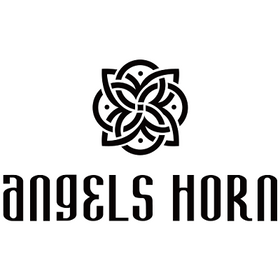
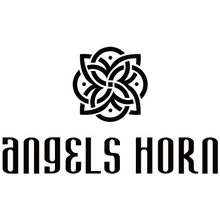




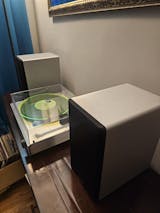
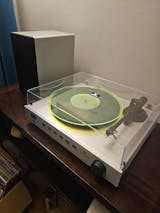
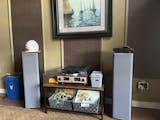

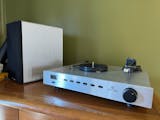
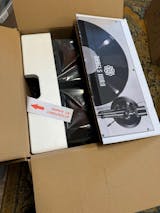
Deixe um comentário